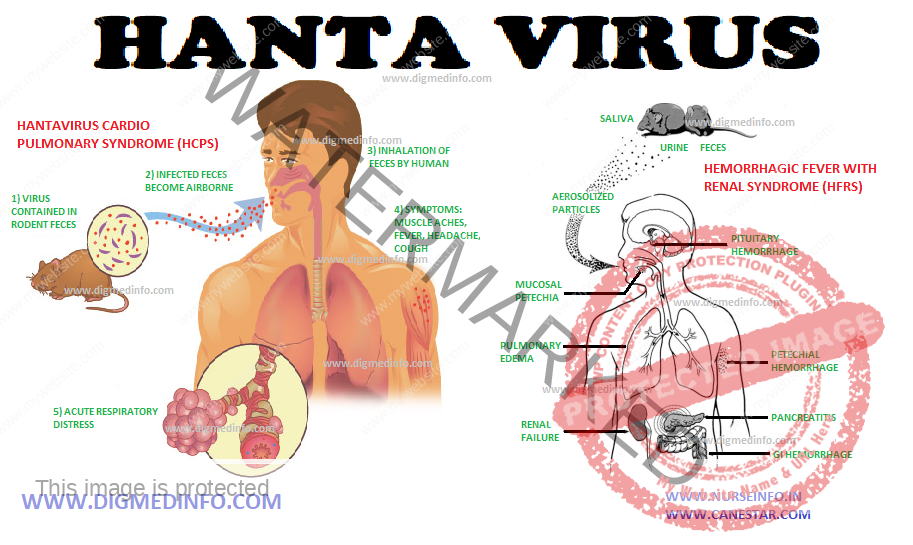HANTA VIRUS – HFRS and HCPS and Treatment
General Characteristics
Hanta virus is a natural inhabitant of rodents and the virus is shed in their urine, feces and saliva. This virus affects the vascular endothelium and causes two major syndromes:
1. Hemorrhagic fever with renal syndrome (HFRS) and
2. Hantavirus cardiopulmonary syndrome (HCPS)
Infection is by aerosol inhalation of infective material. Incubation period is about 3 weeks.
The virus affecting the endothelium leads to immune response against viral antigens expressed on the endothelial cells of the heart, lungs, kidney and lymphoid organs. The immune reactions are mediated by T lymphocytes and macrophages. TNF-α and IL-1 beta increase capillary permeability. Nitric oxide released by TNF leads to vasodilation and shock.
HFRS: Nonspecific constitutional symptoms occur followed by hemorrhagic manifestations along with renal lesions.
Shock, oliguria and DIC follow. Survivors enter a diuretic phase by day 10-14. Thrombocytopenia, leukocytosis with shift to the left, increase in the number of circulating immunoblasts (up to 10% of circulating lymphocytes) and increase in serum levels or LDH should suggest the diagnosis. Specific tests include the demonstration of IgM and IgG antibodies by ELISA.
HCPS:
Constitutional symptoms lasting for 3-7 days are followed by hypotension and shock. Pulmonary edema, cardiac arrhythmias and cardiac arrest may occur. Renal lesions may develop leading to oliguria lasting for 3-8 days, and later followed by polyuria.
TREATMENT
Treatment is supportive with I V fluids, ionotropes, mechanical ventilation and blood products. Ribavarin has been used in usual doses- with variable results.


